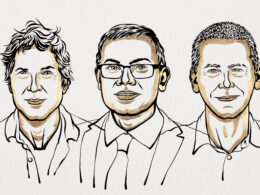Researchers have made a significant discovery regarding the speed at which tiny linear defects, known as dislocations, can propagate through materials, settling a long-standing debate that has persisted for nearly half a century. Dislocations are responsible for the strength and workability of metals but can also lead to catastrophic material failure. The newfound ability to measure the speed of dislocations offers insights into the potential damage they may cause under extreme conditions, such as earthquakes or extreme mechanical stress.

The research, led by scientists from the U.S. Department of Energy‘s SLAC National Accelerator Laboratory and Osaka University, utilized X-ray radiography, similar to medical X-rays, to observe the velocity of dislocations within single-crystal diamond. These findings are not limited to diamond but are expected to apply to other materials. The results were published in the journal Science.
For decades, scientists debated whether dislocations could travel faster through materials than the speed of sound. Previous studies suggested they couldn’t, but computer models indicated otherwise, provided they began their motion at supersonic speeds, which would require a powerful shock. Sound travels at varying speeds through different materials, with diamond having one of the highest sound velocities at 40,000 mi/h (17,881.6 m/s).

To directly observe the speed of dislocations, the researchers generated shock waves within diamond crystals using an intense laser, followed by capturing ultrafast X-ray images of the dislocations as they formed and spread. The study revealed that dislocations moved faster than the slower transverse sound waves within the diamond, challenging previous assumptions about the upper limits of dislocation mobility in crystalline materials.
Understanding the maximum velocity of dislocations is crucial for accurately modeling and predicting material behavior under extreme conditions, potentially preventing unexpected catastrophic failures in structural materials. Further research is planned to investigate if dislocations can exceed the higher longitudinal speed of sound in diamond, pushing the boundaries of our understanding of dislocation behavior in materials.
References
- Katagiri, K., Pikuz, T., Fang, L., Albertazzi, B., Egashira, S., Inubushi, Y., … Ozaki, N. (2023). Transonic dislocation propagation in diamond. Science, 382(6666), 69–72. doi:10.1126/science.adh5563











